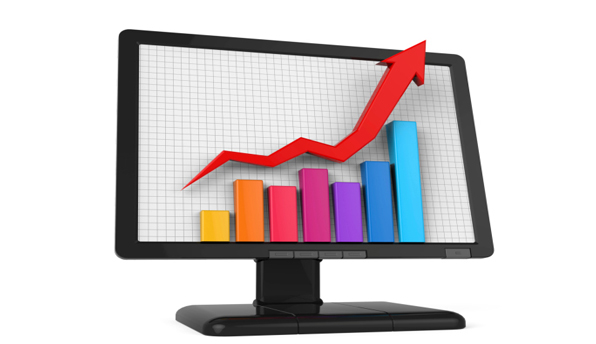

Where's the market headed?
I've explained before, but I'll try again, especially in light of the "big thud" that the market made on Friday.
According to CNBC, "The Nasdaq narrowly avoid[ed] its worst one-day loss this year as momentum names got crushed for a second day. The Dow and S&P 500 finished far from their record highs hit earlier in the session."
I continue to think this market is headed up a while longer.
Of course, it may go down significantly, even go down fast. But it will probably come back. For one thing, it's not October yet, when the real debacles occur. For another, the market is more controlled than ever, and not by "traders," either, but by the big boys, the central bankers and those who assist them.
So let's see what Monday brings. The power elite itself desperately wants this market to continue to move up.
A few decades ago, that determination might not have carried so much weight. But central banks, especially the Fed, are far bolder and more aggressive about manipulating markets than they used to be.
Those forecasting doom and gloom when it comes to the market have ammunition, too, of course. No less of a perma bull than Jim Cramer took time out to interview some bears in an article reported by CNBC entitled "Cramer: Emerging Signs Suggest the Market Is Vulnerable." The article quoted research from Carolyn Boroden of FibonacciQueen.com. …
1. Boroden is concerned that time is not on the side of the bulls. That's because the length of the last bull market, from the lows of October 2002 to the peak in October of 2007, totaled 60 months. The current bull began in March 2009. It has now lasted 61 months. Boroden says it's not uncommon for market events to last for about the same amount of time. That would suggest the bull is coming to an end.
2. The S&P has met Boroden's upside target of 1823 which was determined using Fibonacci ratios. Although the analysis doesn't rule out a further advance, it seems more likely that the path of least resistance should be lower. That's particularly true if the S&P stalls out right at current levels because it would suggest a double top, a bearish pattern.
3. Fibonacci analysis suggests 1881 to 1920 could present a very powerful ceiling of resistance in the S&P. Unless the index can pierce these levels, Boroden doesn't think the market will simply consolidate. Instead, she thinks the market will swoon.
As with all technical analysis, Boroden's perspective comes with lavish qualifiers. The article concludes, "Nasdaq 100 patterns are relatively bullish while the S&P 500 are relatively bearish."
Actually, this doesn't make much sense within a macro-economic framework. Either the fundamentals are there or they are not.
Cramer, we are told, is a fundamental stock picker. "That is, when he picks stocks, he's most influenced by the business prospects of the underlying company, which includes the health of the balance sheet, the abilities of the executives and the strength of the profits margins."
In fact, as anyone who studies stock markets at length knows by now, 21st century fundamentals have a lot more to do with monetary influences than business strategies.
Now, it is true that within an expanding market, investors may seize on a good "story" – a stock that seems to have the qualities that Cramer looks for. But then again, how does one justify an investment in, say … Tesla?
Here's an excerpt from a 2013 article in the Motley Fool regarding Tesla:
Tesla's current market valuation is $14.1 billion. Assume that you want to receive a 10% return on Tesla for the next 30 years. Assume you believe that a stock's performance is inextricably linked to the performance of the underlying business. In that case Tesla must generate, on average, $8 billion in profits for each of the next 30 years
If you want a 10% CAGR for the next 30 years your investment must grow by a total factor of 17.45 (1.1 to the power of 30). Tesla's market cap of $14.1 billion times 17.45 = $246.045 billion. That number divided by 30 = $8.2015 billion.
No company in the automotive industry has even come close to generating $8 billion in average profits over a 30 year span.
Then there is the Q and A from Yahoo Answers:
Why are people buying Tesla stock when it has a P/E of negative 400?
Answer …
The P/E ratio refers to the current price of the stock divided by the past earnings (last twelve months). The smarter investors, like yourself, look at the expected P/E ratio based on the current stock price divided by the future earnings (next twelve months). Obviously we don't know the future earnings but stock analysts are estimating these for all major companies so the future P/E ratio is based on these guesses.
The second point is that Tesla has plans to build many more vehicles in the coming year than the last year – since the Model S has begun selling in Europe and China. Also, Tesla has plans to develop a cheaper model that will be produced in larger quantities at a lower price point. The money spent on research and development NOW is a negative for current earnings (hence the absurd P/E ratio) but will be a positive in the future in terms of better vehicles and higher profit margins. A company that doesn't spend R&D money may have better profits today but pay the price in future earnings if their products become dated or outmoded.
Yes, the current P/E looks irrational but it isn't the whole story.
Perhaps the whole story is that Tesla someday will make US$8 billion? In fact, as the Tesla P/E shows, this market is crazy/insane and has been for years.
There is no recovery. There are no jobs. Bankrupt companies have not been purged. Lenders are frozen, etc.
And stock markets – especially US stock markets – continue to go up.
The power elite wants one more blow-off, one last Wall Street Party. They've jammed the IPO channel with green ventures and lately, it seems to me, they've begun to build out the marijuana industry as well.
This market has absolutely nothing to do with common sense. It has nothing to do with fundamentals.
It has to do with promotion – what the elites want to promote. And they want to boost environmental "solutions" and green technologies like Tesla's.
And so they print. Central banks have, in fact, printed something like US$50 trillion in the past half-decade and jammed a good bit of this incomprehensible tidal wave of money into securities and real estate.
Call this market a "dominant social theme." Or call it the perfect "meme market."
This is directed history for the investment class, folks.
But nonetheless, fortunes may be made before this boom turns to bust. Hundreds of companies may go public. And the fortunate ones will take their money off the table.
Nothing is real about this market but the money some will make.
I've explained this in detail in my most recent book, Financial Freedom: The High Alert Way to Discover Winning Investments, which is available for free download by clicking here.
